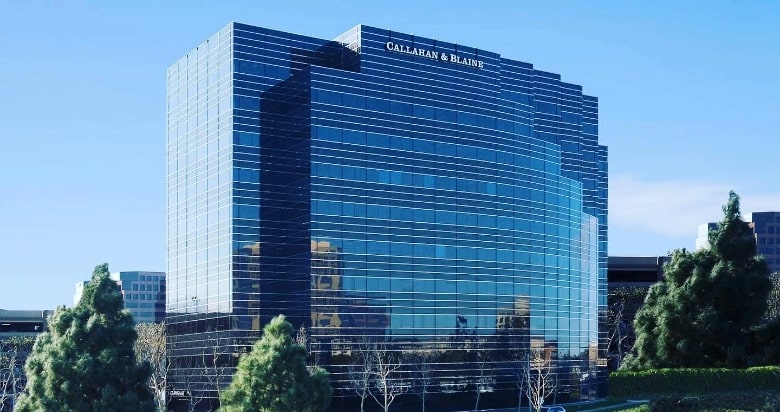Distracted driving is one of the leading causes of car accidents in California, and it remains a serious problem on the road. Distracted driving crashes can result in severe injuries or even fatalities. Proving distracted driving in a crash can be challenging, but it is essential for ensuring justice for the victims and holding distracted drivers accountable. If you’ve been involved in a car crash caused by a distracted driver, understanding the evidence needed to prove the cause of the accident is crucial.
There are several ways to prove distracted driving, from analyzing driver’s cellphone records to examining the crash scene for evidence of risky driving behaviors. Below, we’ll explore the key methods used to prove driver distraction, how laws play a role, and how to gather and present the right evidence to strengthen your case.
Proving Distracted Driving Through Cellphone Records
One of the most common ways to prove distracted driving is by reviewing the driver’s cellphone records. Phone use while driving is a primary cause of driver distraction, and in many cases, it can be the determining factor in a crash. If the driver was using their cellphone to text, browse the internet, or make a call at the time of the accident, these actions can often be traced through text messages, call logs, and internet activity on the cellphone records.
In many cases, law enforcement can subpoena cellphone records as part of their investigation. These records can show the exact times when the driver was actively using their phone, which may align with the time of the crash. Additionally, traffic cameras or cellphone use can provide video evidence of the driver engaging in distracting behaviors, such as texting or talking on the phone while driving.
Analyzing the Crash Scene for Evidence
Another way to prove distracted driving is by analyzing the crash scene for signs of risky driving behaviors. Drivers who are distracted often fail to maintain proper control of their vehicle. This can lead to traffic violations, such as running a red light, failing to yield the right of way, or drifting out of their lane. Traffic safety experts can examine skid marks, vehicle positioning, and other physical evidence at the scene to determine if the driver’s actions were consistent with distracted driving.
In the case of fatal crashes, proving distracted driving may involve reconstructing the events leading up to the collision. Investigators may look for signs that the driver was not paying attention, such as swerving or erratic braking. In many cases, driver distraction can explain why the driver failed to react appropriately in time, leading to a car crash.
Risky Driving Behaviors and Distracted Driving Laws
Distracted driving laws vary by state, but many local laws make it illegal to use a wireless device while driving. For example, texting or using a phone without a hands-free device is often prohibited. In teen drivers, these laws are strictly enforced because young drivers are more prone to engaging in risky behaviors like texting while driving or using social media apps behind the wheel.
If the driver was caught committing any traffic violations related to distracted driving, such as texting while driving or failing to stop at a red light, it can help support your claim. A distracted driver who violates these laws can be held liable for their actions. Collecting evidence of traffic violations, such as traffic cameras or witness statements, can provide strong support in proving distracted driving.
Using Witness Testimony and Other Evidence
Witness testimony can also play a critical role in proving distracted driving. Eyewitnesses to the crash or to the distracted driver before the accident can offer valuable insights into the driver’s behavior. For example, if witnesses saw the driver texting on their phone just moments before the crash, this testimony can be used to establish that driver distraction was a factor in the accident.
Additionally, school bus drivers, truck drivers, and others who are trained to be vigilant on the road can sometimes provide expert testimony regarding risky driving behaviors and how distracted driving differs from regular mistakes on the road. These professionals can speak to the common signs of a distracted driver and offer their expertise on what to look for when proving driver distraction.
The Role of Traffic Cameras and Local Laws
Traffic cameras can also be useful in proving distracted driving. In many cities, traffic cameras are installed at intersections or along busy streets to monitor traffic safety and capture violations such as running a red light. If a distracted driver is caught on camera engaging in risky behaviors, such as swerving or running a red light while on their phone, this footage can be pivotal in proving that distracted driving caused the accident.
Additionally, local laws may require drivers to be more mindful of their behavior, such as using hands-free devices or not texting while driving. If the driver violated these local laws, it strengthens your case by showing that their actions were not only reckless but also illegal.
The Impact of Distracted Driving on Car Crashes
Distracted driving is a leading cause of many crashes, especially in teen drivers and those using electronic devices like smartphones. Distracted driving accounts for a significant portion of traffic accidents, and the consequences can be devastating. Whether it leads to fatal crashes or minor fender benders, the damage caused by a distracted driver can result in significant medical bills, property damage, and emotional distress.
The impact of driver distraction goes beyond the initial crash. It can affect the lives of those involved in the accident, including physical recovery, financial hardship, and emotional trauma. Proving that a distracted driver was at fault is essential for obtaining compensation for medical bills, lost wages, and pain and suffering.
If you have been involved in a crash caused by distracted driving, working with an experienced car accident attorney is crucial. A lawyer can help gather the necessary evidence, including cellphone records, traffic cameras, and witness testimony, to build a strong case on your behalf. At Callahan & Blaine, we specialize in distracted driving cases and are committed to helping you seek justice. Contact us today at (714) 241-4444, or reach out through our contact form to learn how we may assist with your accident case.
FAQ About Distracted Driving
How can I prove distracted driving in a car accident?
Proving distracted driving can involve reviewing cellphone records, analyzing traffic cameras, and gathering witness testimony. Driver distraction evidence, such as text messages or phone calls, can help establish the cause of the crash.
What are common signs of distracted driving?
Common signs of distracted driving include swerving, erratic braking, failure to stop at traffic signals, and a lack of awareness of surrounding vehicles. Distracted drivers may also be seen texting, using their cellphones, or engaging in other risky driving behaviors.
Can I use traffic camera footage to prove distracted driving?
Yes, traffic cameras can provide crucial evidence in proving distracted driving. If a camera captures the driver engaging in risky behaviors, such as texting or running a red light, it can support your claim.
What are the legal consequences of distracted driving?
Distracted driving can result in fines, traffic violations, and liability for damages in the event of a crash. In some cases, the distracted driver may face criminal charges, especially if their actions led to severe injuries or fatalities.
Can teens be held accountable for distracted driving accidents?
Yes, teen drivers can be held accountable for distracted driving accidents. In fact, teens are at a higher risk for engaging in risky behaviors, such as texting while driving, making it even more important to enforce laws that prevent these actions.

